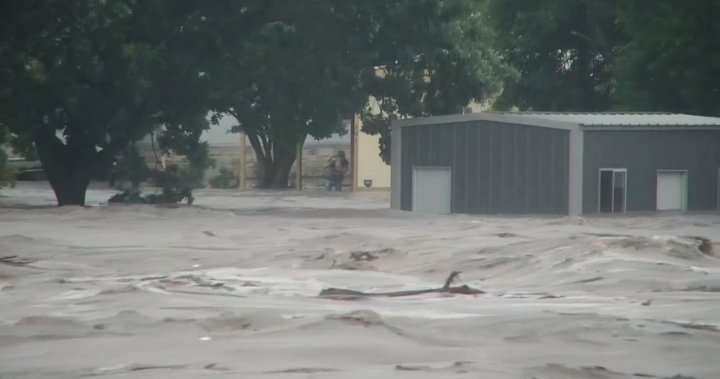In the wake of devastating floods that recently swept through parts of Texas, a disturbing scam has emerged that exploits both the victims’ suffering and innocent bystanders. A fraudulent GoFundMe campaign claiming to raise funds for Texas flood victims has been discovered using stolen photos of an Ontario family who have no connection to the disaster.
The deceptive fundraiser, which appeared online shortly after flooding began in the Houston area, featured images of a smiling Canadian family alongside a heart-wrenching—and entirely fabricated—story about losing their home in the Texas deluge. The campaign had already collected nearly $7,000 from well-meaning donors before being flagged as fraudulent.
“It’s absolutely shocking to discover our family photos being used this way,” said Jennifer Larson, the Ontario mother whose family pictures were misappropriated. “We’ve never even been to Texas. Someone has stolen our images from social media and created this elaborate lie to prey on people’s generosity.”
The incident highlights the growing sophistication of disaster-related fraud, a problem that has intensified with the rise of online crowdfunding platforms. GoFundMe has since removed the fraudulent campaign and is working to refund all donations, according to company spokesperson Maya Rodriguez.
“Our trust and safety team employs both technology and human review to identify suspicious fundraisers,” Rodriguez explained. “Unfortunately, these scammers are becoming increasingly sophisticated, which is why we encourage donors to verify campaigns before contributing.”
Cybersecurity experts warn that disaster-related scams tend to proliferate following high-profile catastrophes. “Criminals know that people feel emotionally compelled to help during crises,” said Dr. Raymond Chen, digital security specialist at the University of Toronto. “They exploit this natural empathy by creating convincing false narratives that appeal to our desire to provide immediate assistance.”
For the Larson family, the violation extends beyond the misuse of their images. “These scammers aren’t just stealing money; they’re diminishing legitimate relief efforts and potentially redirecting funds from people who genuinely need help,” Jennifer added.
The Texas Division of Emergency Management has issued warnings about donation scams, advising would-be donors to research charitable organizations through verification services like Charity Navigator or GuideStar before contributing.
Law enforcement agencies in both Canada and the United States are investigating the scam, though identifying the perpetrators presents significant challenges due to the anonymous nature of many online fundraising efforts.
For those wishing to support genuine flood relief efforts in Texas, officials recommend working through established organizations with verified track records of disaster response, such as the American Red Cross or local community foundations with dedicated disaster relief funds.
As we witness the best of humanity emerging through legitimate relief efforts, we must also remain vigilant against those who would exploit tragedy for personal gain. How can we balance our desire to provide immediate assistance with the necessary caution to ensure our generosity reaches those truly in need?










